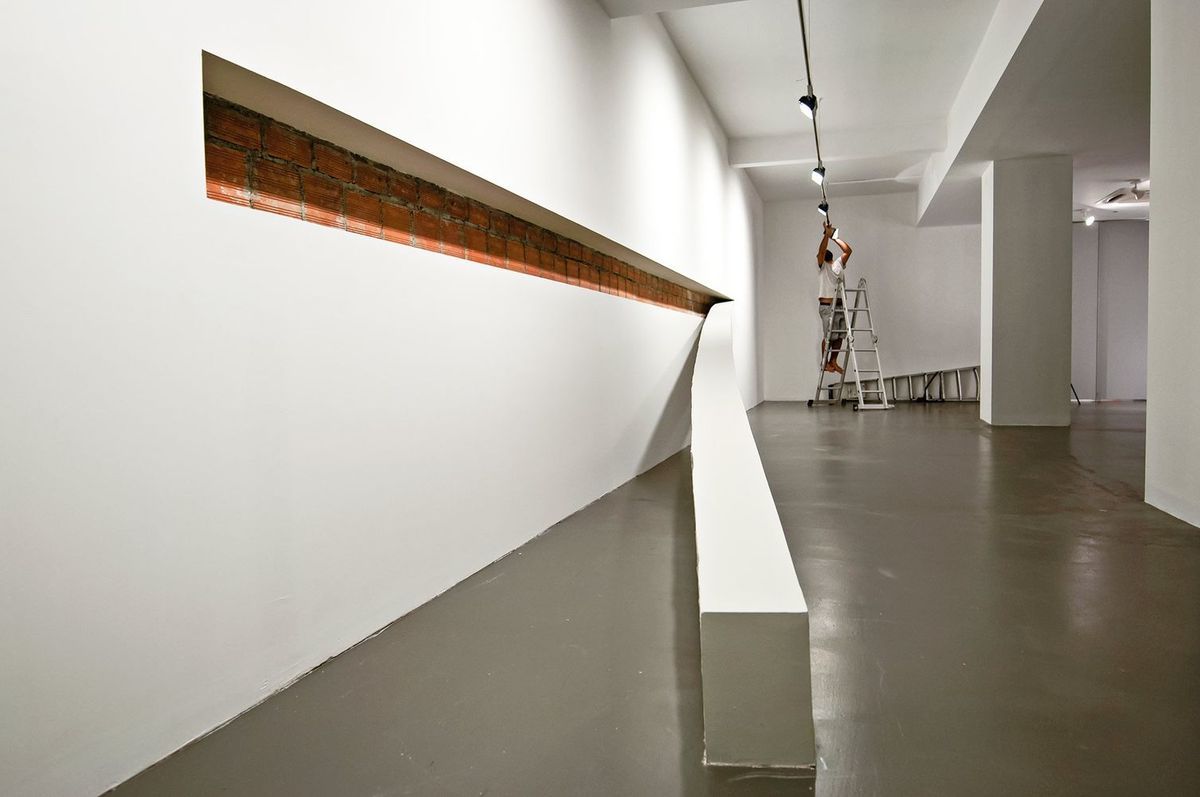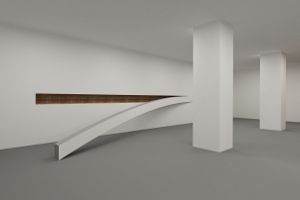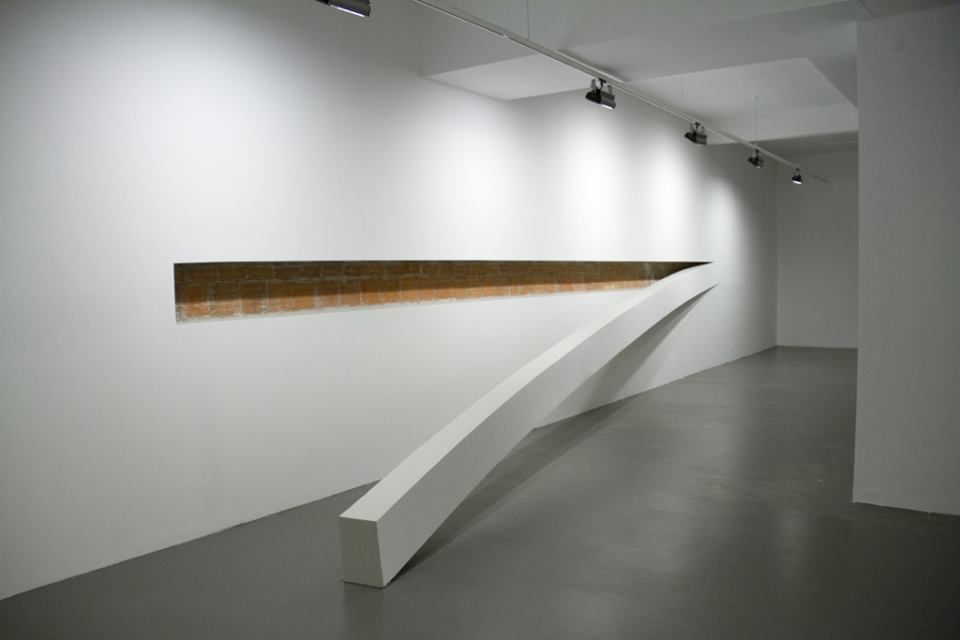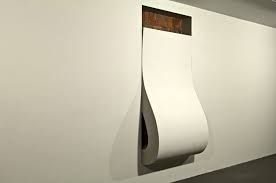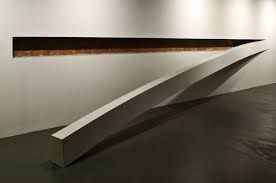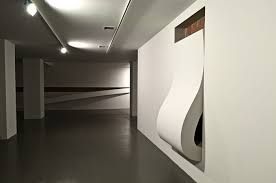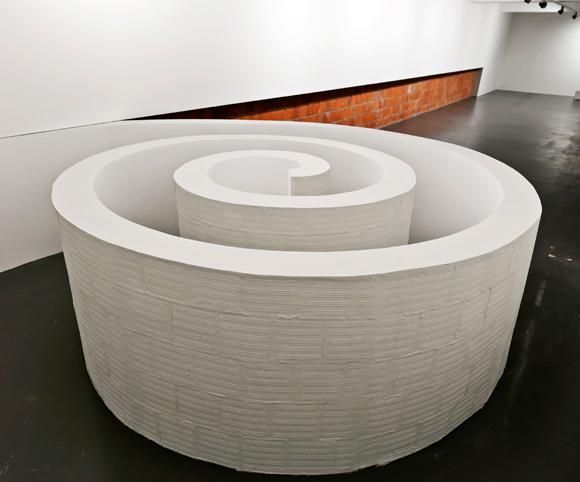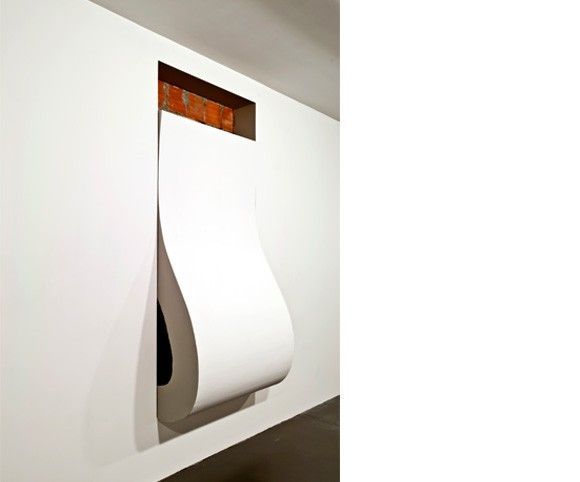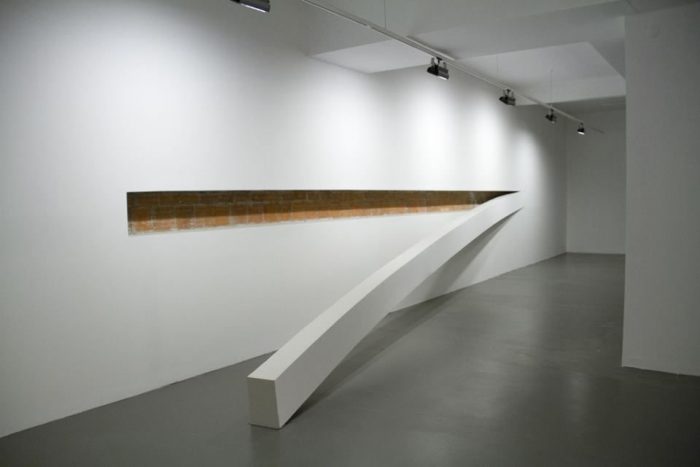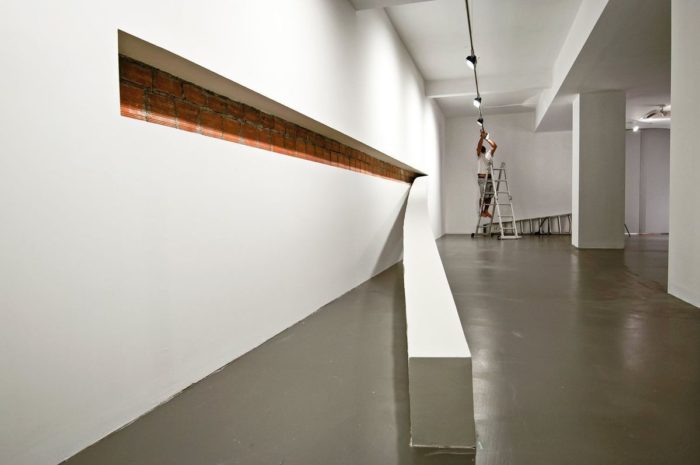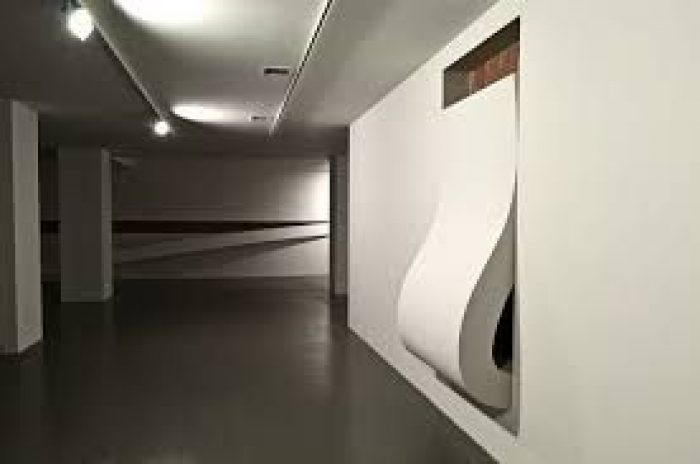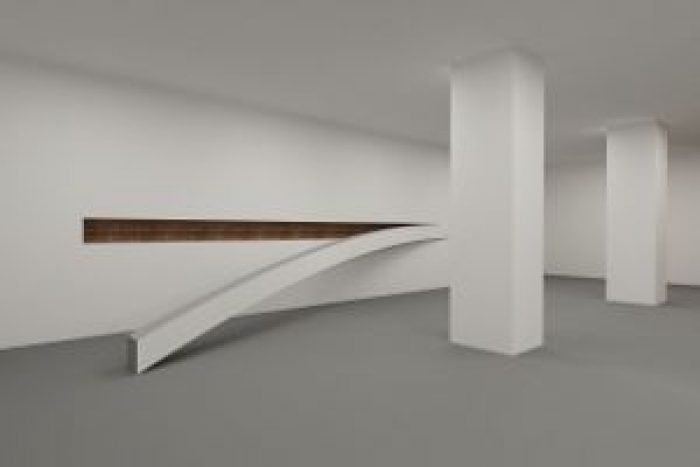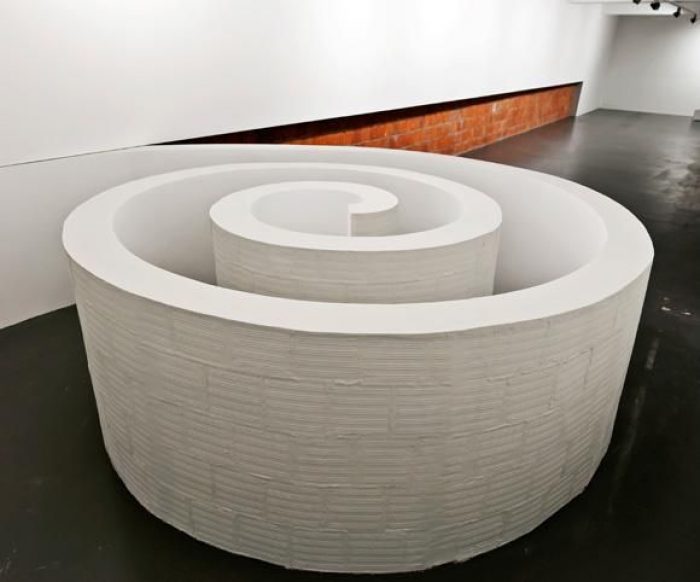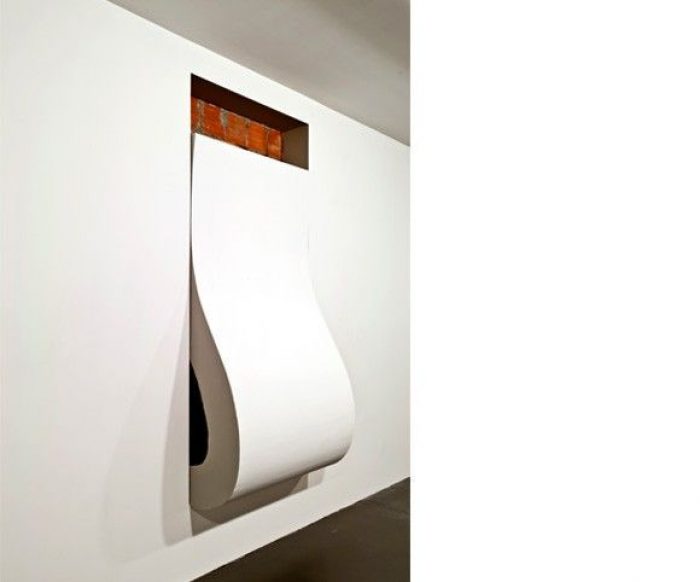Today, the process of creating, exhibiting and perceiving contemporary art is deeply intertwined with the architectural location as well as the social and cultural environment of its production and display. Before modern art, the gallery space in the tradition of the Salon was rather unregarded. Since Marcel Duchamp’s installation 1.200 Bags of Coal at the 1. International Surrealist Exhibition in 1938 in New York, the gallery became part of the artwork. Later, during the post-war-period of the neo-modern era, especially since Yves Klein’s The Void in 1958 in Paris, the gallery space itself became the artwork. Then since the 1970’s institutional critique, interventions within and with the gallery were used for criticizing art and its context. That is why today, the gallery space plays an important role for being an immanent parameter of art with the power to formally and conceptually influence, even determine the artwork, artist and spectator.
In Mehmet Ali Uysal’s oeuvre, space, and here especially the white cube of the gallery, is always a major factor, as it is an inseparable part of his sculptural installations, objects, photos and videos. Inside the white cube, the artist analyzes how the process of creating and viewing art is connected to the time and place of its production and displacement. For him, the gallery space defines the cause, material, form and content of a work.
In the past, space often functioned for Uysal as a record that internalized the human experience. That is why in pieces like “Ten / Skin” (2004) or “Untitled” (2004), he investigated the connection between interior and exterior spaces of architecture as well as the human body. There, the artist revealed a relationship between the wall and the human skin, as he flexed and stretched the wall to show its resemblance with the skin. For Mehmet Ali Uysal, the walls of the gallery are not rigid, untouchable or unchangeable architectural limitations, but porous and liquid elements, with which he can formulate his artistic statement.
In his exhibition at Nesrin Esirtgen Collection he goes one step further by perceiving the gallery space itself as an artwork. As Uysal is aware of the contextual power and the ideological matters of the gallery space, he believes that one must interfere with its structure in order to be able to convert the ideology of the white cube. This leads automatically to a conflict with the gallery space, and this is the reason for his current pieces destroying the compulsory perception of the gallery being understood as the perfect space for the display of art.
The three installations, which together with its space should be understood as one work, clearly follow a minimal aesthetic and are executed with the visual vocabulary of the rational and geometrical. At the same time – and here we see a difference to the formalism of minimal art – the work deals with simulation and illusionism. At first glance, the three separate objects seem like cut out pieces of the gallery walls. However, these parts were not cut out, but formed by the artist according to the missing spaces in the wall, which were also created by him. The pieces therefore were measured, designed and built by Uysal and his team. That is why the forms that the spectator sees are not ready-made but sculptural objects.
Within large holes inside of three walls, orange bricks occur and form a strong contrast to the clean white plaster of the gallery’s display area. There, the artist creates a visual clash, which at the same time refers to a socio-cultural clash between shifts as well. The work formulates an institutional critique that goes beyond the limits of our art world and refers to a larger context of socio-cultural discussions about e.g. the accessibility of our art scene. The bricks are construction material, which usually get plastered in order to hide their rawness and ugliness. In low-income-neighbourhoods, where the “gecekondu” and other forms of illegal urban development prevail, mostly, the brick wall remains like it is; it is not covered, hidden or embellished. The brick wall in Mehmet Ali Uysal’s work carries a cultural connotation and functions as a sign for a wider social contextualization.
All is illusion in Nesrin Esirtgen Collection’s gallery space. There is no cut out piece, and no orange brick wall behind the original white wall. There is not even an original white wall that we can see, because the one we look at was installed by Uysal, and is another part of the whole work. The actual wall of the gallery is hidden behind the bricks and Uysal’s white wall. So, the exhibition consists of three pieces, which each have three massive parts (white wall, orange brick wall and sculptural object). Peeling therefore is a formal and conceptual play with various types of walls.
The wall as sculptural and theoretical matter has an important relevance in Mehmet Ali Uysal’s oeuvre. He understands the walls of the gallery as its skin, which usually is an untouchable base for art works. Uysal in contrast aims at bringing a new meaning to the nature of the gallery by deconstructing the walls and deforming its flawless surface. While interfering with the sanctity of the space, he also honours it by transforming it into a work of art. During this process, the artist reveals its hidden identity and historicity, which the gallery permanently erases for the sake of looking clean, unused and perfect. For Uysal, this act of anti-historicalness gives the white cube a sterile character, which he believes is one reason for the gap between gallery and visitor. The artist breaks through this sterility and, as he understands the gallery space as a living entity, revives it as a living entity.
In the end, Mehmet Ali Uysal deforms, deconstructs and transforms the given space at Nesrin Esirtgen Collection in order to break its neutrality, sterility and cold aesthetic. After the artist’s spatial interventions, the gallery’s perception changes from hosting a cold emptiness to become a space with surprises. Uysal defines the gallery as an artwork, and deals with it as a certain structure rather than a sacred entity. His work is outstanding in its use of minimal language and formulation of a conceptual approach, which renews matters of minimalism and institutional critique without neglecting current socio-cultural issues.
